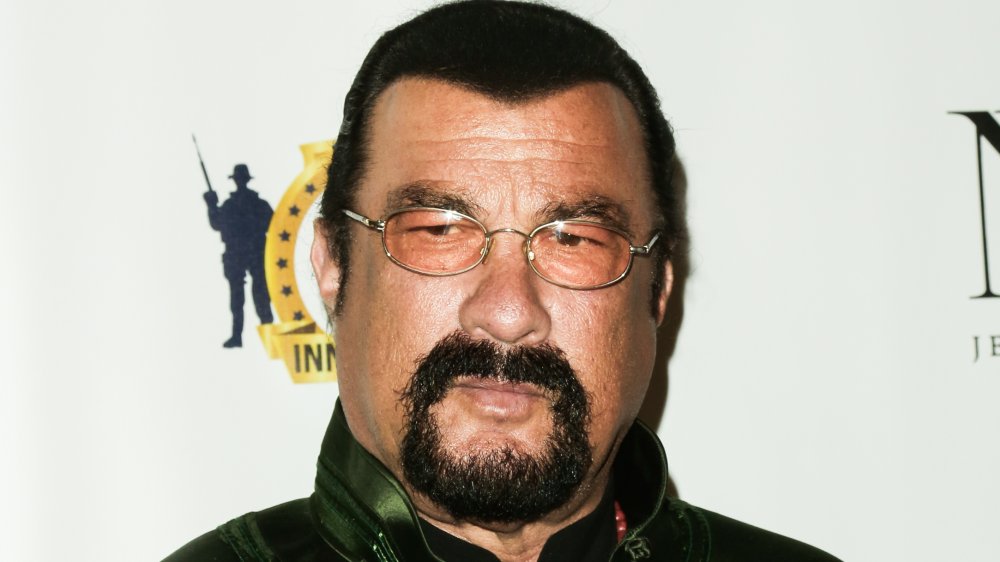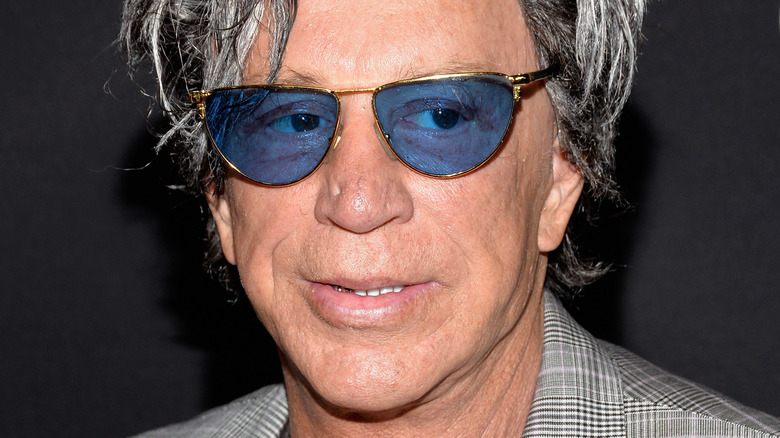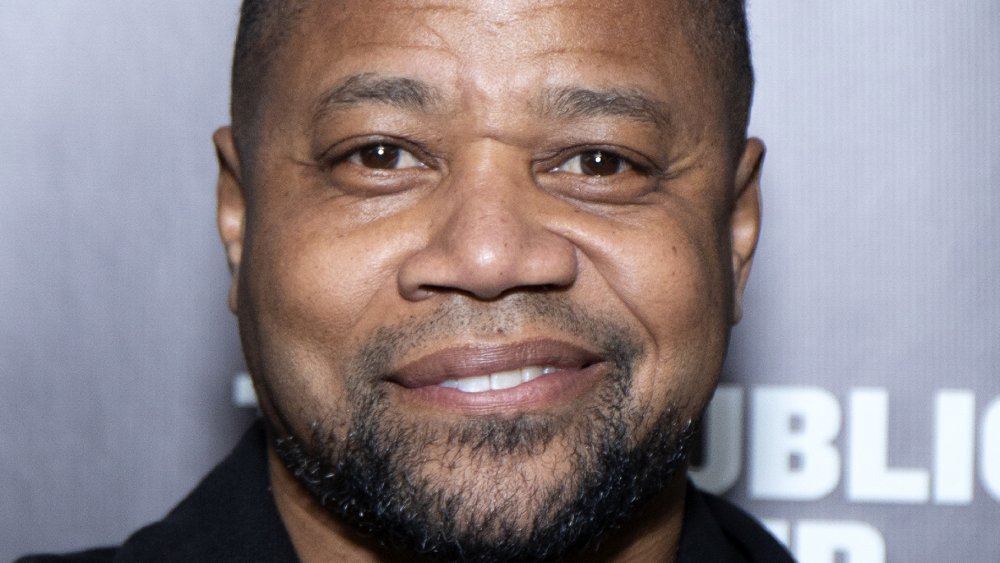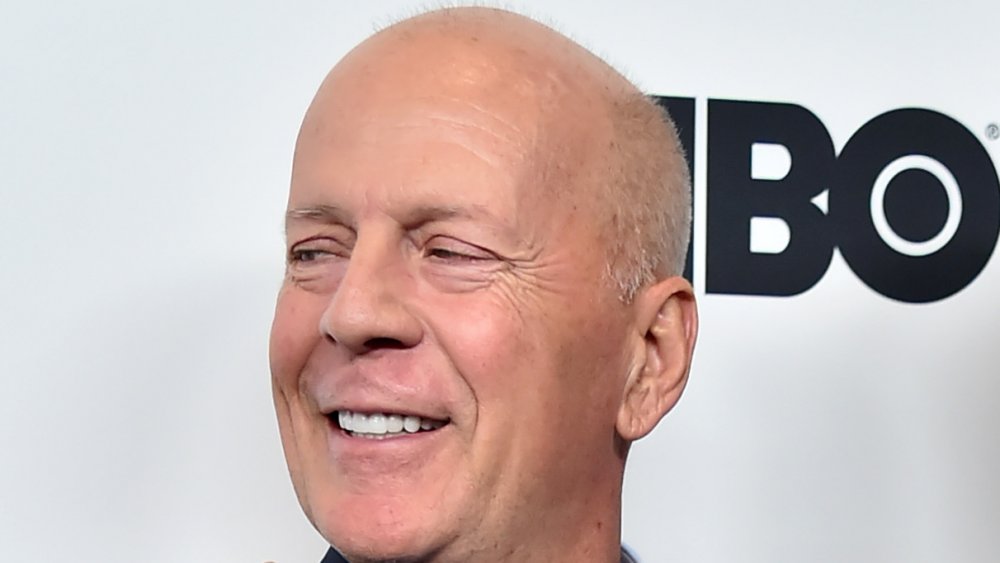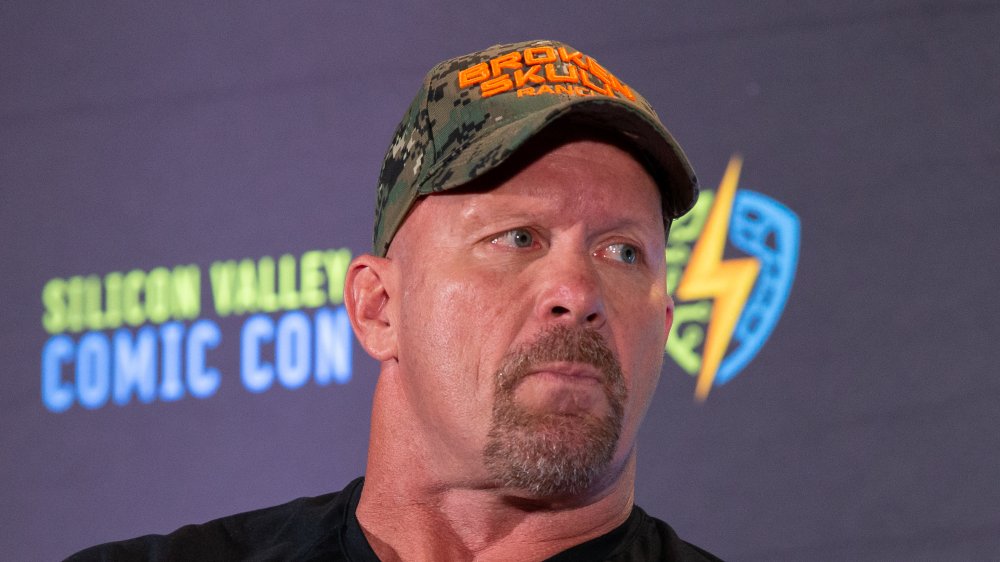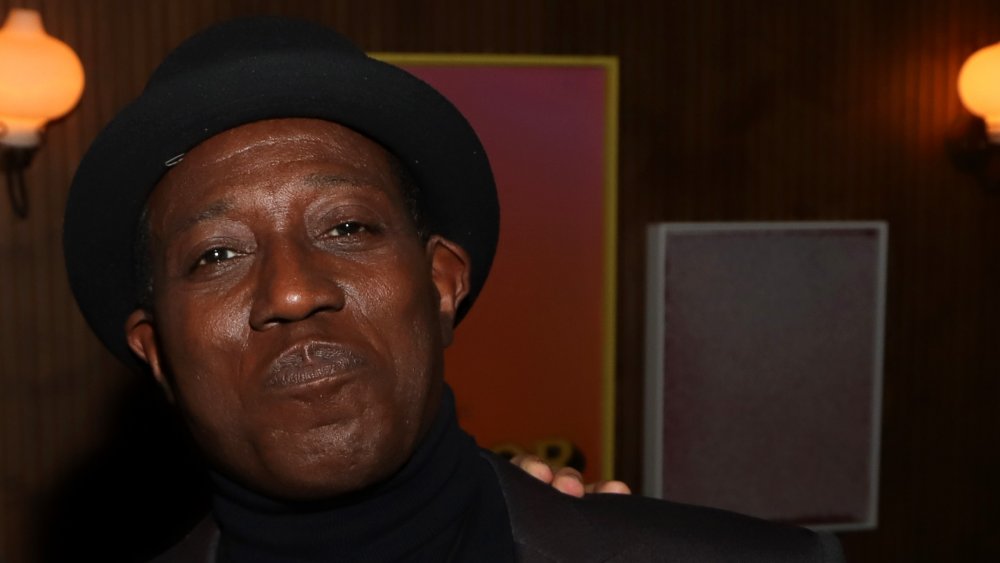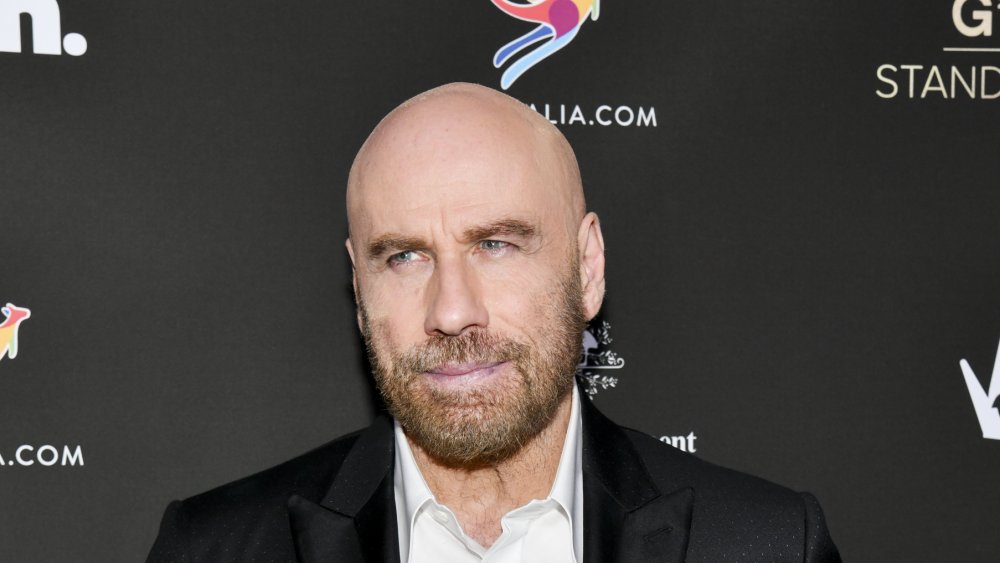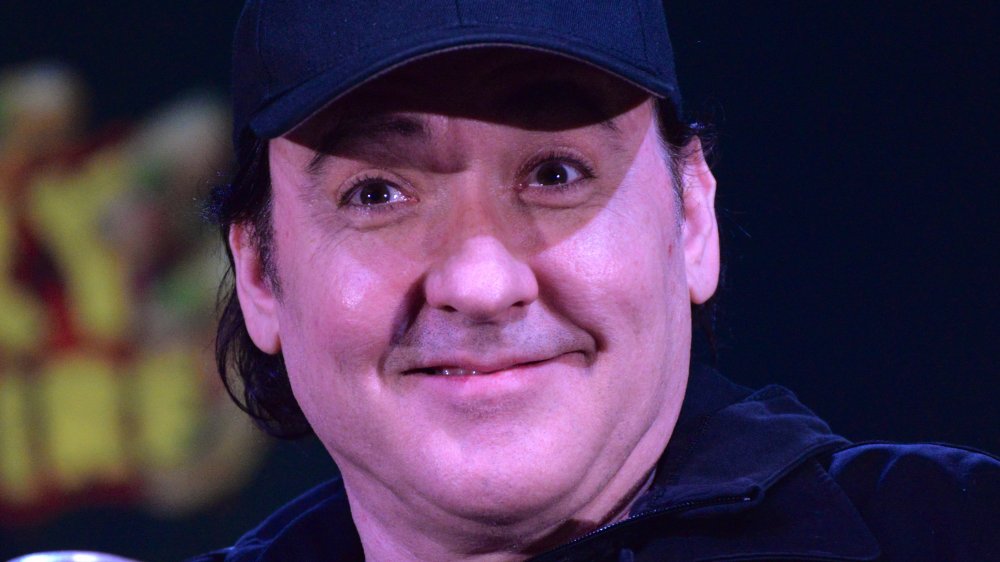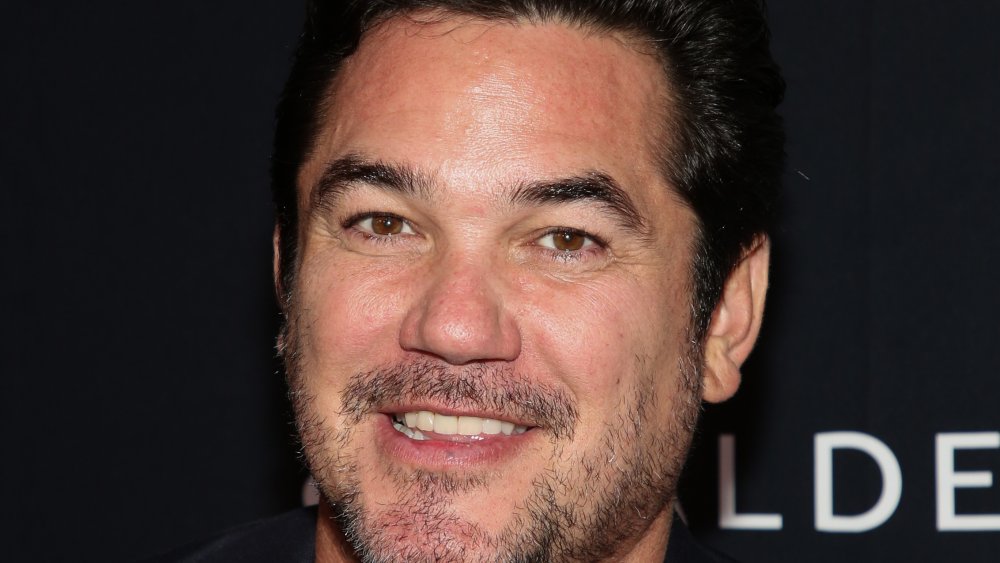Action Movie Stars Who Sadly Think They're Still Famous
Explosions, fistfights, large firearms, and cocky one-liners. Exotic, outsized locations and the car chases that hurtle at breakneck speeds between them. The "gear up" sequence. We know the component parts of action movies as well as we do the long list of actors who have made the genre their own. But for every boffo summertime box office action hit, there are reams of films that, from a quality perspective, rely on that very same durability of format to deliver something less than the sum of their parts.
These are films that populate the outer reaches of streaming and on demand services. They offer to scratch our itch for big booms and tense shootouts, for fast cars and steely-eyed vengeance, and hook us in with a recognizable name out front. And that's the catch. Because these action movies are also a haven for actors who for various reasons and in various ways have fallen out of favor with Hollywood's mainstream. They've found reliability in this shadowy realm, if not quality, and the chance to stay kind of relevant. Or at least cash a paycheck. Here are some stars whose action movie careers have taken some interesting turns, to say the least.
Steven Seagal's in the belly of the beast of direct-to-video
Between 1987 and 1992, Steven Seagal made a streak of three-word-titled action films that prominently featured him kicking major ass and running very awkwardly. Movies such as Marked for Death and Above the Law were hits, and Seagal's star rose. (IndieWire breaks down Seagal's "least inessential" films here.) But Hollywood grew weary of his attitude, and audiences moved on, with Seagal finding his way into the wild frontier of direct-to-video releases — a land where his ego was free to roam.
Belly of the Beast, Code of Honor, Out of Reach, Against the Dark, and A Dangerous Man all feature Seagal doing what he does best — no, not sick Aikido moves employed to whale on thugs, but feeding his insatiable need to flood the zone with Steve. Often produced by Seagal, many of these films are built around the concept of Seagal As Badass, even if he's ultimately not even in them very much. ("Despite Seagal being the only person photoshopped onto the cover he's not the main character at all," wrote Outlaw Vern of 2016's Sniper: Special Ops.) Contract to Kill, also from 2016 (and another three-word title!) is the exception: AV Club's Ignatiy Vishnevetsky noted that Seagal is in every scene, "but he gives the kind of performance traditionally associated with stars who died during filming."
Mickey Rourke is in his 'weird charisma' phase
After a lauded late-career comeback that included a Best Actor nomination for 2008's The Wrestler and a high-profile role as a villain in the Marvel Universe, Mickey Rourke drifted idly into the DTV universe and hasn't looked back.
The offbeat eccentricity that was his calling card for years has served Rourke well in this world, too, in that he's often tasked with helping to sell a film on his name recognition, but only has to show up for a few scenes full of "weird charisma," as The Hollywood Reporter put his brief appearance in 2015's Blunt Force Trauma. Rourke played Satan in a bizarre action-horror romp from 2013 called Dead in Tombstone, but "he just kinda loafs around Hell," as Collider describes it, "saying esoteric things and staring contemplatively at the floor." Variety was blunter concerning Rourke's appearance in The Legion, released in 2020. Muttering his way through an extended cameo as a Roman general, it's "the spectacle of a lazy actor who can't be bothered to take anything seriously anymore."
Cuba Gooding Jr. spent '10 years in the wilderness'
The moment Cuba Gooding, Jr.'s career skidded off the Hollywood highway is very clear. It was with the 2002 release of the widely panned Boat Trip, for which he received a Razzie nomination for Worst Actor.
A nearly unbroken string of direct-to-video releases followed, most featuring artwork with a stern-faced Gooding holding a gun. Clunky actioners like 2009's The Way of War (which IGN described as "a tedious war thriller"), and One in the Chamber (2012), or the paper-thin '09 action/sci-fi hybrid Hardwired, where Gooding's performance was described as "lazy," and "far-from-engaging." He is seen brandishing a gun in a production still, though, so there is consistency. And as Gooding settled onto the DTV trajectory, his best-supporting actor Oscar for Jerry Maguire a distant memory, he became the subject of articles pondering the question of just what the hell happened to his career.
For his part, Gooding answered that question in a 2018 interview with the Guardian, blaming his own hard-headedness for turning down quality roles and forcing him to spend "10 years in the wilderness."
Bruce Willis is smiling wryly all the way to the bank
It was around 2011, even as he returned to movie screens as John McClane in A Good Day to Die Hard, that "direct-to-DVD" started appearing next to titles in Bruce Willis's filmography. A bankable, reliable action lead throughout the 1990s and 2000s, Willis was suddenly and frequently appearing in cheap DTV actioners and thrillers where he had little to do but show up and convey a sense of vague irritation while deploying his wry half-smile. "Why does Bruce Willis Keep Making Films He Clearly Hates?" wondered Esquire.
Well, one big reason is the steady paychecks that dreck like Extraction, The Prince, Vice, and Reprisal proffer. Even if you've never heard of these films, they find markets for the distributor internationally or on streaming services, with Willis' well-known mug scowling from the front cover. Look, not even John McClane can single-handedly take down teams of bad guys forever. Sometimes work is work, even if it's for, as the Independent put it, "remnants of his name." And if viewers still crave a bit of that famous Willis irascibility, maybe a late-night viewing of Extraction can provide. "It's not totally awful," offered Den of Geek, "just kind of dull and predictable — with Willis' brief action chops being the opposite of tested."
Steve Austin is cracking skulls on demand
The Rock, John Cena, Rowdy Roddy Piper — it's a well-traveled road between professional wrestling ring and action movie marquee. For Steve Austin, who ascended to wrestling's elite upper reaches in the 1990s with his "Stone Cold" moniker and the catchphrase "Austin 3:16," the transition to cracking skulls on the silver screen seemed like a natural progression. And that happened. Kind of.
In 2007, Austin starred in The Condemned, a World Wrestling Entertainment-produced spin on The Most Dangerous Game that was critically condemned for its brutality and questionable moral compass. From there it was on to a litany of direct-to-video action, films with hard-bitten titles like Tactical Force and Maximum Conviction where there was plenty of brawn displayed but an obvious lack of budget. Austin's run at action film heroics wasn't even fooling genre fans. Considering the 2015 bruiser Chain of Command, Manly Movie's reviewer questioned whether Austin's brief scenes were filmed anywhere other than in one room. And Den of Geek damned 2010's The Stranger with the faintest of action movie praise: "It has bursts of violence that are ugly, uninspired, and lazily choreographed, but at least make for a reason to keep watching."
Megan Fox: rogue one?
After a series of smaller movie and television roles, Megan Fox's career really took off with her appearance in 2007's Transformers. The big, loud Michael Bay-directed sci-fi/action spectacle spawned five sequels, but Fox only made one, having been dropped from the project after she made disparaging comments about Bay.
A live-action role in the animated, Bay-produced Teenage Mutant Ninja Turtle films followed, and Fox appeared on TV and in numerous mildly successful films. She eventually returned to action with 2020's Rogue, a film Fox seems to have taken at least in part to reckon with her own action movie past. T.J. Bassett, Rogue's director, revealed to ET that casting Fox was an attempt "to subvert expectations of who she is perceived to be in the media," and Fox herself told the outlet she'd turned down numerous military-themed action roles out of a lack of confidence. In Rogue, Fox plays the leader of a team of mercenaries who face off against a pack of CGI lions. Critical comment is mixed on the film, with some outlets offering praise for Fox's performance and others reacting negatively to the film's budget constraints and the aforementioned computer-generated animals. For now, the jury is still out on whether Fox can transform herself back into an action star.
Wesley Snipes' career isn't as sharp as it once was
Wesley Snipes' run in the '90s is unparalleled, thanks to roles in films like Blade; To Wong Foo, Thanks for Everything! Julie Newmar; New Jack City; U.S. Marshals; Demolition Man; and Major League. And in the 2000s, he would, of course, go on to star in two more Blade flicks. But as Looper noted, his career doesn't have the momentum it once did. From high-concept flops (Variety called 2000's The Art of War a "B-level international thriller") to real-life roadblocks (in 2010, Snipes began serving a three-year prison sentence for filing false tax returns), Snipes has hit some road blocks in his quest for continued action stardom.
Luckily, with Snipes' name recognition and well-known look, there was work to be had in the direct-to-video world. Snipes seized on this, and his early aughts filmography teems with quickie DTV action films shot in Bulgaria (2007's The Contractor) or Romania (2006's The Detonator) and featuring him as some form of rogue operator or black ops trigger man. He even made a direct-to-video sequel to Art of War, which Variety called "tired and uninspired." And as no one recalls, the once mighty Snipes was last seen battling aliens (and a reportedly terrible script) in 2017's The Recall.
John Travolta is still stayin' alive
Career-wise, John Travolta has been up (Saturday Night Fever), and he's been down (Two of a Kind). He's been up again (Pulp Fiction). These days he's mostly...sideways?
Since 2010, Travolta's film output has showcased a tendency for roles as a broad, despicable villain or a Man Wronged, with many of the flicks trending toward the same low budget, random-streaming-service-actioner that has propped up the career of Bruce Willis. 2016's I Am Wrath is a great example. The New York Times called it a "revenge movie, and a buddy movie, and a spiritual-crisis movie," with the result doing none of those genres justice. There is of course plenty of violence, and a chance at redemption for Travolta's character, so there's material for him to mine, however muddled it might be.
Like Willis or the prolific, sometimes iffy (but often brilliant) work of Nicolas Cage, these low-budget or just low-quality films give a once name-brand actor such as Travolta a headline spot and ample space to ham it up. "Starring in this manic mess is one offer John Travolta should have refused," Rolling Stone's Peter Travers wrote of the misbegotten bio pic Gotti, which Travolta also produced. With various grim crime thrillers filling out Travolta's recent slate of work, it seems like the nagging question of what happened to Travolta's career is going to keep being asked.
John Cusack doesn't want to 'put on the tights'
It's hard out here for an aging heartthrob. While he has worked steadily in film since his teenage years, John Cusack has more recently found roles, or at least access, in Hollywood a little harder to come by.
"It used to be that if you did a big, big movie, then you could leverage it and make some smaller, cooler ones," Cusack told The Guardian in 2012. "But now, they just want you to put on the tights — if you don't put on the tights, they just get rid of you." He's not interested in throwing on any superhero tights for Marvel or DC, but has instead stepped into the murky waters of Video On Demand.
In 2014 he made Drive Hard with Thomas Jane ("Cusack barely works at all," noted Variety, "hiding behind shades throughout") and The Prince with Bruce Willis ("A movie designed to get enough undiscriminating mouse-clicks to get in the black," wrote Scott Tobias at The Dissolve), while 2017 found him chewing scenery beside Nicolas Cage in the DTV action-thriller Arsenal. (Of the latter, AV Club's Jesse Hassinger pointed out Cusack again wore sunglasses throughout.) Film School Rejects might have best summed up this trend toward bland VOD actioners by Actors of a Certain Age: "The men who headlined some of the biggest films of the eighties and nineties now film entire movies that no one knows exists until they show up under the heading 'Because you liked Con Air.'"
Dean Cain: Superman by day, VOD star by night
Dean Cain landed the role of a lifetime when he was tapped to bring Superman back to the small screen. ABC aired four seasons of Lois & Clark between 1993 and 1997, and the show later developed a bit of a cult following for its lasting, quirky appeal.
Forever tied to his part in the ongoing narrative of Krypton's favorite son, Cain drifted from Lois & Clark into TV movies, guest shots on CSI: Miami, and film, where he made low-budget martial arts actioners like Max Havoc: Ring of Fire, director Renny Harlin's 2011's limited-budget war film 5 Days of War, and 2014's Airplane vs. Volcano.
Like so many of his contemporaries, action, particularly of the VOD variety, has offered a landing place for an actor still coming to terms with his legacy, or at least just looking for a solid gig. In 2015, Cain put up his dukes in the World Wrestling Entertainment-produced prison fight film Vendetta, which the Hollywood Reporter called "ruthlessly efficient" despite its formulaic aspects. As the late-period action movie work of so many of these actors suggests, ruthlessly efficient counts as gold when it's the best you can get.


